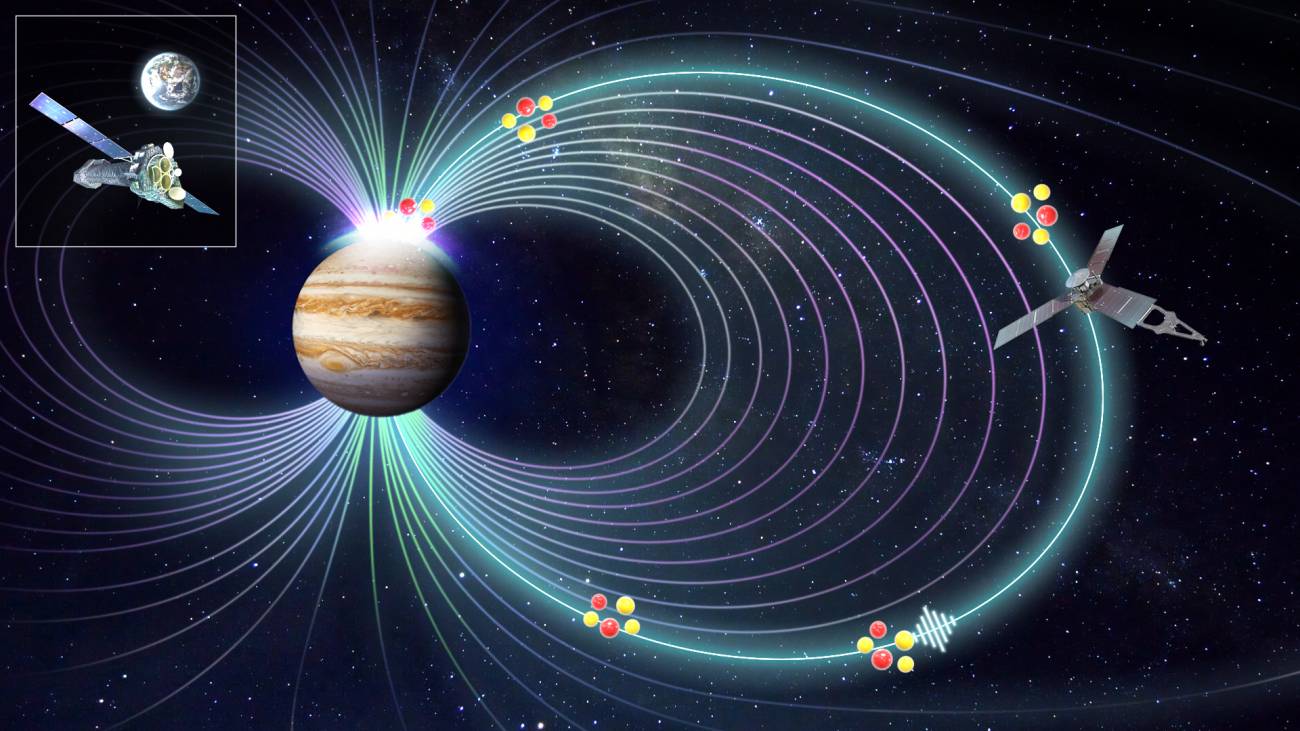solve a puzzle X-ray aurora borealis on JupiterWe know its causes and how it happens
Planetary astronomers have observed for the first time the full mechanism of how these auroras occur and work. They suggest that this process could also occur in other parts of the solar system, such as Uranus or Saturn, or even on the outer planets.
Astronomers and planetary astronomers have been studying emissions from X-ray aurora borealis of Jupiter. Their “colors” show that these auroras are caused by the collision of electrically charged particles – ions – with the atmosphere of the giant gas. But the researchers had no idea how the ions got into the planet’s atmosphere.
Now, for the first time, astronomers and astronomers have figured out how to do it Electromagnetic waves “surf” ions From Jupiter’s magnetic field to the atmosphere.
The colors show that these auroras are charged with ions that collide with Jupiter’s atmosphere. But until now, researchers had no idea how these particles got here.
These observations come from data analysis from X-ray Observatory XMM-Newton European Space Agency (ESA) and probe Juno from NASA. The first instrument, located in Earth’s orbit, remotely observes Jupiter at X-ray wavelengths. For its part, Juno orbits Jupiter and takes readings On sitefrom within the magnetic field. But what exactly were they looking for?
You can also read: Gender and gender variables missing in clinical studies on COVID-19
The key came when Chunghwa Yao, a researcher at the Institute of Geology and Geophysics of the Chinese Academy of Sciences and lead author of the study, realized that there was something meaningless about Jupiter’s X-ray aurora.
In the Earth, the aurora is only visible in the belt surrounding the magnetic poles, between Latitude 65 and 80 degrees. After this point, emissions from the aurora disappear because the magnetic field lines leave Earth and connect to the magnetic field of the solar wind, the continuous stream of electrically charged particles ejected by the sun. These lines are called “open field lines” and according to this traditional description, the polar regions of Jupiter and Saturn are not expected to emit significant auroras.
However, the X-ray aurora of Jupiter does not correspond to this description: they are directed towards the poles of the main auroral belt, pulsate regularly, and can sometimes differ at the north and south poles. These are some typical characteristics of closed magnetic field, where the magnetic field line originates from one pole and reconnects with the planet on the contrary.
Between July 16 and 17 2017, the XMM-Newton Observatory and the Juno probe observed Jupiter’s atmosphere at the same time to identify those critical aurora launch regions.
Across simulation By computer, Zhonghua and his colleagues discovered it years ago X-ray pulsating aurora can be associated with closed magnetic fields that are created inside Jupiter and extend millions of kilometers into space before returning to the planet.
* Cover image: For the first time it became possible to observe how Jupiter’s magnetic field compresses, which heats up the particles and directs them along magnetic field lines towards the atmosphere, causing the X-ray aurora. By combining data from NASA’s Juno mission (right of image) with X-ray observations from ESA’s XMM-Newton (upper left corner). / Photo: European Space Agency / NASA / Yao / Den

“Problem solver. Proud twitter specialist. Travel aficionado. Introvert. Coffee trailblazer. Professional zombie ninja. Extreme gamer.”





More Stories
With a surprise in the case: a strange cell phone from Nokia was introduced
PlayStation Stars: what it is, how it works and what it offers to its users | Sony | video games | tdex | revtli | the answers
t3n – Digital Pioneers | digital business magazine